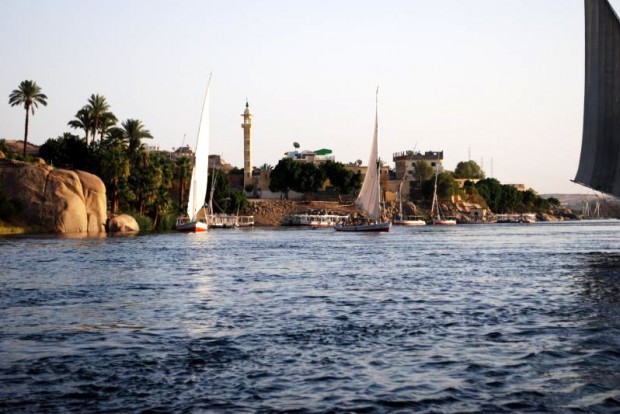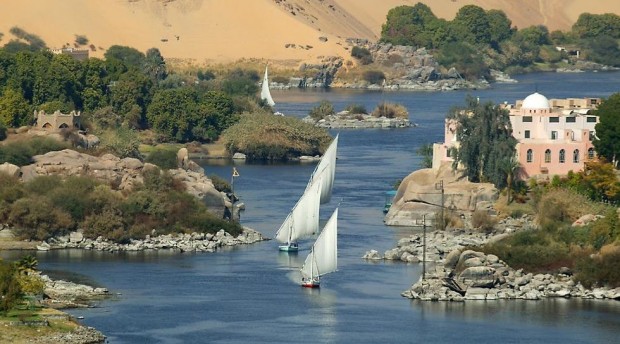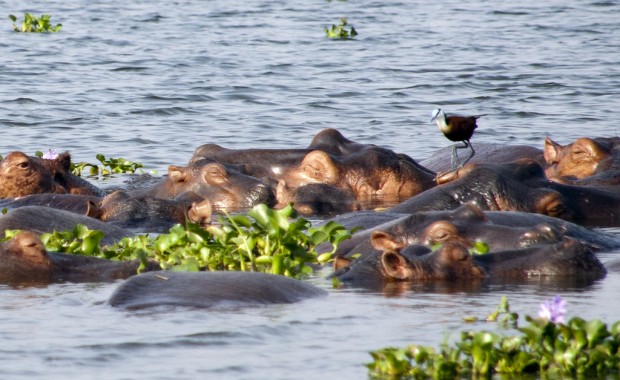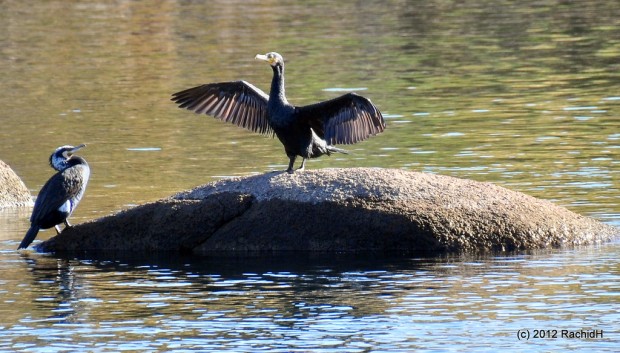State of Egypt has a territory consists of desert lands through which passes the Nile River and also represent one of the most desirable tourist destinations. Rivers are a real source of life. In addition, they provide fast traffic and interesting view of the countries through it passing. Boating on the river Nile, visit the natural hot thermal springs and ancient ruins among as beautiful romantic arrangement.
Many Egyptians use the Nile River for fishing, transport and irrigation. The ancient Egyptians believed that the Nile River flowing from “heaven”, because every year at a certain time that same river making an extremely fertile land which gave it in Egypt always enough food. It is obvious that all of Egypt depended on the river. The need to create and maintain irrigation canals and held permanent river transport were some of the main reasons why Egypt established its own national government, becoming the first organized state in history. The possibility of unlimited water supply has resulted in the development of state and society that created great wonders of ancient Egypt.

Image by Jessy Harrison via Flickr

Image by Sam valadi via Flickr

Image by Morgan Schmorgan via Flickr
Nile can be considered to be the only source of life for this country. River Nile is 6.695 kilometres long. It is formed by the White and Blue Nile. Blue Nile springs from Lake Tana in Ethiopia, while the White Nile from lakes in Uganda. By its delta Nile flows into the Mediterranean Sea. Most of the river flows in Egypt with a total of 22%. It creates a flowing green valley beside the desert. Other states through it crosses are Burundi, Rwanda, Tanzania, Kenya, Uganda and Ethiopia.

Image by Rachid H via Flickr
Image by Nagarjun Kandukuru via Flickr
Image by Nagarjun Kandukuru via Flickr
Confluent of White Nile contributes with about 15% and the confluent of Blue Nile with 85% in the formation of this river. White Nile flows through Ecuadorian and tropical area, so brings very natural sediment from decaying leaves, while the Blue Nile flowing through areas rich with iron oxides that accrue when is ejected from his riverbed. Therefore the Nile valley is very fertile and provides up to three harvests a year.
Image by LM TP via Flickr
Image by David Fielke via Flickr
